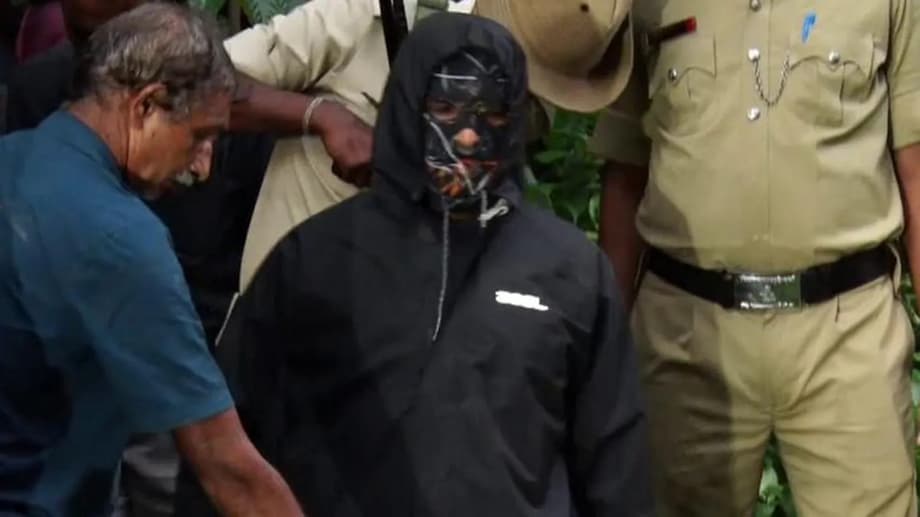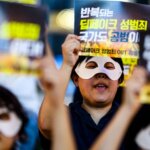Shocking Allegations Erupt in Dharmasthala: What Happened?
The tranquil temple town of Dharmasthala in Karnataka, India, has been thrust into the national and international spotlight following explosive allegations of mass rapes, murders, and secret burials spanning nearly two decades. The claims, made by a former temple sanitation worker, have triggered a sweeping criminal investigation, revived old wounds from unsolved cases, and ignited fierce political and social debate about justice, accountability, and the power wielded by religious institutions in India.
- Shocking Allegations Erupt in Dharmasthala: What Happened?
- Who Is the Whistleblower and What Are the Allegations?
- How Did Authorities and the Public Respond?
- What Is the Historical Context? Have There Been Similar Cases?
- What Has the Investigation Uncovered So Far?
- Why Is This Case So Controversial?
- What Are the Broader Implications?
- In Summary
At the heart of the controversy is the Manjunatha Swamy temple, an 800-year-old pilgrimage site that draws thousands of devotees daily. The temple is administered by the influential Heggade family, whose stewardship and social work have long been lauded. Yet, the recent allegations have cast a shadow over the town’s reputation and raised troubling questions about what may have transpired behind its sacred facade.
Who Is the Whistleblower and What Are the Allegations?
The whistleblower, a 48-year-old Dalit man whose identity is protected by the courts, worked as a cleaner at the Dharmasthala temple from 1995 to 2014. After spending over a decade in hiding, he emerged in July 2025, driven by what he described as an unbearable burden of guilt. In a detailed police complaint, he alleged that he had been coerced by temple supervisors into burying the bodies of hundreds of women and girls—many showing signs of sexual assault and violence—along with destitute men who had come to the temple town seeking alms.
He recounted harrowing incidents, including the burial of a teenage girl in a school uniform and a woman whose face had been burned with acid. According to his testimony, many of the female victims were found without clothing or undergarments, and some bore clear marks of strangulation or other violence. The whistleblower claimed he was repeatedly threatened with death and subjected to beatings if he refused to comply with the orders to dispose of the bodies. He also described being forced to burn some corpses with diesel to destroy evidence.
His allegations were not limited to women and girls. He described the systematic murder of poor men, who were allegedly suffocated in rooms and then buried or burned. The whistleblower said he decided to come forward after years of trauma and fear, hoping that exhuming the victims and giving them proper funeral rites would bring peace to their souls and alleviate his own guilt.
How Did Authorities and the Public Respond?
The whistleblower’s claims sent shockwaves through Karnataka and beyond. Public outcry and media coverage pressured the state government to act swiftly. On July 3, 2025, the Karnataka government established a Special Investigation Team (SIT) to probe the allegations. The SIT was tasked with verifying the whistleblower’s claims, identifying burial sites, and collecting forensic evidence.
In the days that followed, the SIT conducted excavations at multiple locations identified by the whistleblower, many of them along the banks of the Nethravathi River and in remote, overgrown areas. Human remains—including a skull and nearly 100 bone fragments—were recovered from two of the 16 suspected burial sites. These remains were sent for forensic analysis, but as of this writing, their identities and causes of death remain unconfirmed.
The case quickly became a lightning rod for political and religious tensions. Opposition politicians, particularly from the Bharatiya Janata Party (BJP), accused the government of orchestrating a smear campaign against a prominent Hindu religious site. The government, for its part, insisted that it had no intention of shielding or maligning anyone and that the investigation would follow the evidence wherever it led.
Temple authorities, led by chief administrator Veerendra Heggade, categorically denied the allegations, describing them as baseless and part of a long-running campaign to discredit the temple and its social work. Heggade welcomed the SIT investigation, stating, “All records are open for scrutiny and the guilty should be punished.” He also criticized the role of social media in spreading misinformation and expressed confidence that the truth would ultimately vindicate the temple’s reputation.
What Is the Historical Context? Have There Been Similar Cases?
The allegations have revived painful memories of past unsolved cases in Dharmasthala. The town has a history of protests and public anger over sexual violence and mysterious deaths, dating back to the 1980s. Notable among these is the 1987 murder of Padmalatha, a college student whose family alleged she was raped and murdered. Her body was buried, not cremated, in the hope that it would aid future investigations. Despite public pressure, no one was ever convicted.
Another high-profile case is the 2012 rape and murder of 17-year-old Sowjanya, which led to widespread protests and demands for justice. Multiple investigations, including a Central Bureau of Investigation (CBI) probe, failed to secure a conviction, and the accused was acquitted in 2023. Families of missing persons and victims have long alleged cover-ups and mass graves, but until now, no one had come forward with such detailed and direct testimony as the current whistleblower.
The town’s lack of a police station until 2016 and the influence of the Heggade family over local affairs have fueled suspicions of institutional complicity or negligence. Activists and legal experts have criticized previous investigations as lacking transparency and being too limited in scope.
What Has the Investigation Uncovered So Far?
The SIT’s work has been painstaking and, at times, controversial. Of the 16 sites identified by the whistleblower, human remains were found at two locations. At other sites, no remains were discovered, and in one case, identification documents found at a burial site were traced to a man who had died of jaundice and was cremated elsewhere, raising questions about the reliability of some claims.
The whistleblower himself produced a human skull as evidence, claiming it belonged to a victim he had buried. However, the SIT stated that the remains were not from any spot he had identified. This discrepancy led to the whistleblower’s arrest on charges of perjury, a dramatic turn that has further polarized public opinion. Supporters argue that the arrest is an attempt to silence a key witness, while authorities maintain that it is necessary to uphold the integrity of the investigation.
Meanwhile, the SIT has received new complaints and requests for reinvestigation from families of missing persons, including relatives of Padmalatha and Sowjanya. The investigation has also been marred by clashes between local residents and media personnel, leading to several arrests and injuries. A judge issued a gag order removing hundreds of online links about the case, though this was later lifted amid concerns about transparency and press freedom.
Why Is This Case So Controversial?
The Dharmasthala case sits at the intersection of religion, caste, gender, and power in India. The whistleblower is a Dalit, a member of a marginalized community historically subjected to discrimination and violence. His allegations implicate powerful figures in the temple administration, challenging the authority and sanctity of a revered institution.
The case has also become a political football, with parties trading accusations of bias, cover-up, and communal targeting. The temple’s administration by a Jain family, despite being a Hindu site, has added another layer of complexity, with some critics questioning the management’s transparency and motives.
Social media has played a significant role in amplifying the controversy, spreading both information and misinformation at a rapid pace. Authorities have warned against the dissemination of false claims and have taken legal action against individuals accused of spreading rumors.
What Are the Broader Implications?
The Dharmasthala investigation has exposed deep fissures in Indian society regarding the treatment of sexual violence, the accountability of religious institutions, and the rights of marginalized communities. It has highlighted the challenges of investigating crimes that may have been systematically covered up for decades and the difficulties faced by whistleblowers seeking justice.
The case has also underscored the importance of forensic science in uncovering the truth, as well as the limitations of such investigations when evidence is scarce or degraded. The SIT’s findings will be closely watched, not only for their immediate impact on Dharmasthala but also for their potential to set precedents for similar cases elsewhere in India.
For the families of the missing and murdered, the investigation offers a glimmer of hope for closure and justice. As one relative of a victim told reporters, “Even if only a few victims are identified, they deserve justice.”
In Summary
- Dharmasthala, a major temple town in Karnataka, is under investigation following allegations of mass rapes, murders, and secret burials spanning nearly two decades.
- The whistleblower, a former temple sanitation worker, claims he was coerced into burying hundreds of bodies, many of them women and girls showing signs of sexual assault.
- The Karnataka government established a Special Investigation Team (SIT) to probe the allegations, leading to the recovery of human remains at two sites.
- The whistleblower was arrested for perjury after discrepancies in his testimony and evidence, sparking further controversy.
- The case has revived interest in older unsolved cases and exposed longstanding concerns about cover-ups, caste discrimination, and the power of religious institutions.
- Temple authorities deny all allegations and welcome the investigation, while political and social tensions continue to simmer.
- The investigation is ongoing, with forensic analysis and new complaints still being processed.




